#nuclear energy!
Text
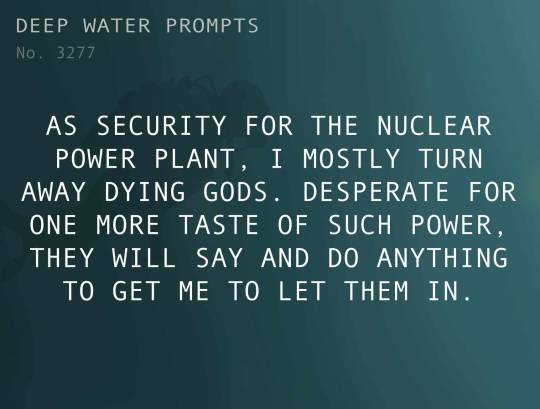
Text: As security for the nuclear energy plant, I mostly turn away dying gods. Desperate for one more taste of such power, they will say and do anything to get me to let them in.
522 notes
·
View notes
Text

WE GOT FUSION
THE ONLY FUEL WE NEED NOW IS HYDROGEN, THE MOST PLENTIFUL ELEMENT IN THE ENTIRE GODDAMN UNIVERSE
WE'RE PROGRESSING AS A SPECIES, WE GOT FROM FIRE TO COAL TO HARNESSING THE VERY POWER THAT BURNS THE STARS
IM SO PROUD OF US
3K notes
·
View notes
Text

Grafenrheinfeld Nuclear Power Station, Germany. Photo by Martin Langer.
552 notes
·
View notes
Text
RIP Tim Drake. you would've loved the original Coca Cola that had cocaine in it.
#he's got his fucking nuclear energy drinks though#so I guess he'll be alright.#beverage boy#tim drake#love that loser#(affectionate)#batman#dc#dcu#batfam
224 notes
·
View notes
Note
Saloonatics yuri...

yeah
#it takes a lot in me to be normal about ell i could probably power a nuclear power plant with the amount of energy i hold back#eddsworld#ellsworld#silly art
225 notes
·
View notes
Text
Scientists have discovered the first indication of nuclear fission occurring amongst the stars. The discovery supports the idea that when neutron stars smash together, they create "superheavy" elements — heavier than the heaviest elements of the periodic table — which then break down via nuclear fission to birth elements like the gold in your jewelry.
Nuclear fission is basically the opposite of nuclear fusion. While nuclear fusion refers to the smashing of lighter elements to create heavier elements, nuclear fission is a process that sees energy released when heavy elements split apart to create lighter elements. Nuclear fission is pretty well known, too. It's actually the basis of energy-generating nuclear power plants here on Earth — however, it had not been seen occurring amongst the stars before now.
"People have thought fission was happening in the cosmos, but to date, no one has been able to prove it," Matthew Mumpower, research co-author and a scientist at Los Alamos National Laboratory, said in a statement.
Continue Reading.
212 notes
·
View notes
Text
On This Day In History
March 3rd, 1917: Egyptian nuclear physics Sameera Moussa was born. She was an activist for peaceful uses of nuclear energy, especially as a form of cancer treatment. She was the first woman to work at Cairo University and the first person of color to be allowed to visit secret US atomic facilities—a highly controversial event.
105 notes
·
View notes
Text
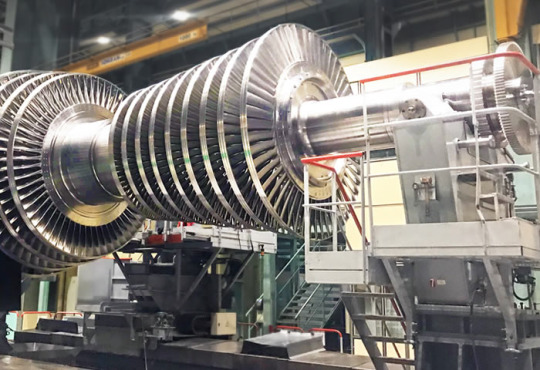
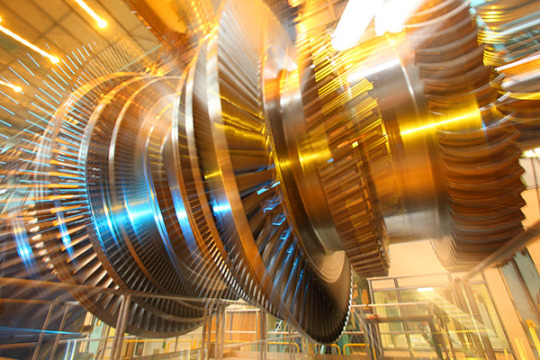
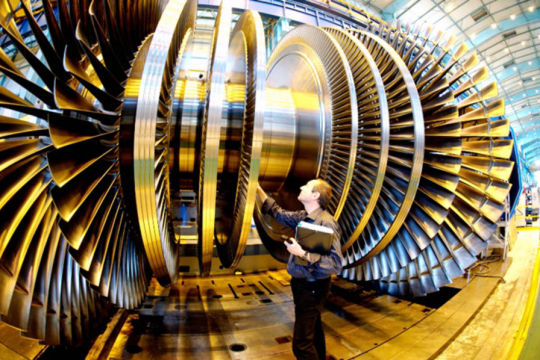
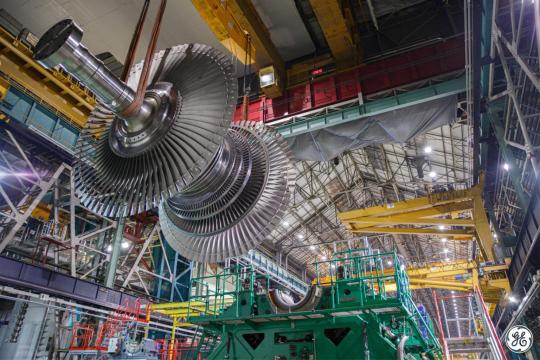
Arabelle - GE steam turbine for nuclear power plants ☢️🏭⚡
😻/😻/😻/😻
#aesthetic#cyberpunk#tech#tech aesthetic#electricity#engineering#power plant#elektrostantsiyapost#technology#engineers#engineer#electrical engineer#electrical engineering#engblr#steam turbine#nuclear energy#nuclear#nuclear power plant#power engineering#nuclear engineering#power generation#electrical#arabelle turbine#turbine#industrial#turbine blades#aren't steam turbines beautiful?#nuclear power#machines#steel
65 notes
·
View notes
Photo

End of Nuclear power in Germany this week. Energy production from 2000 until today.
by u/Detektiv_Mittens
Closed nuclear power plants replaced mostly by coal power plants.
The ‘intensive use’ of German coal power plants lead to additional emissions of 15.8 million tonnes of CO2 in 2022, according to a report by consultancy Energy Brainpool commissioned by Green Planet Energy. Due to the energy crisis caused by Russia’s war in Ukraine, Germany temporarily reopened decommissioned and soon-to-be decommissioned coal power plants last year to avert gas shortages, which resulted in more CO2 being released. According to the authors, the emissions are ‘additional’ because they are not accounted for in the European Emissions Trading System (ETS). Germany's total emissions amounted to about 750 million tonnes last year.
351 notes
·
View notes
Text
I think regardless of your opinion on nuclear energy I think we do need to talk about the risks because even if it is the safest energy nothing is 100% safe and we need to be honest with that and come up with plans to protect people
63 notes
·
View notes
Text
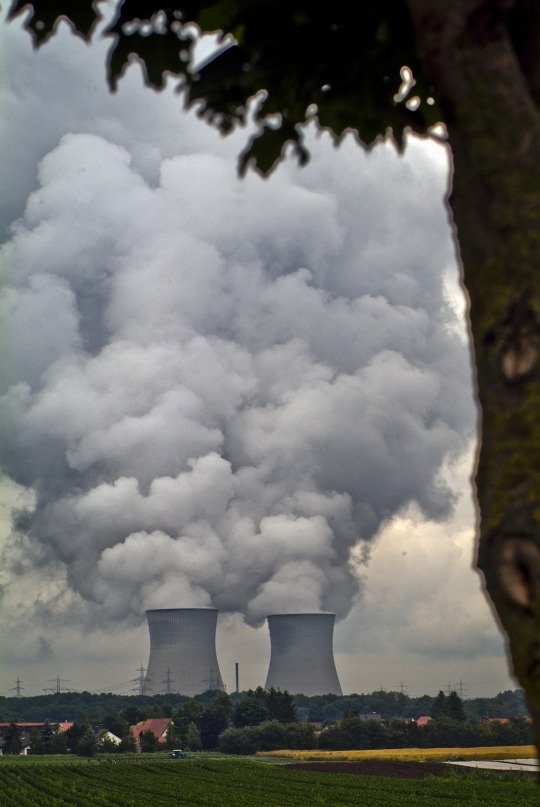
Gundremmingen Nuclear Power Plant, Germany.
(Deutsche Fotothek)
216 notes
·
View notes
Text
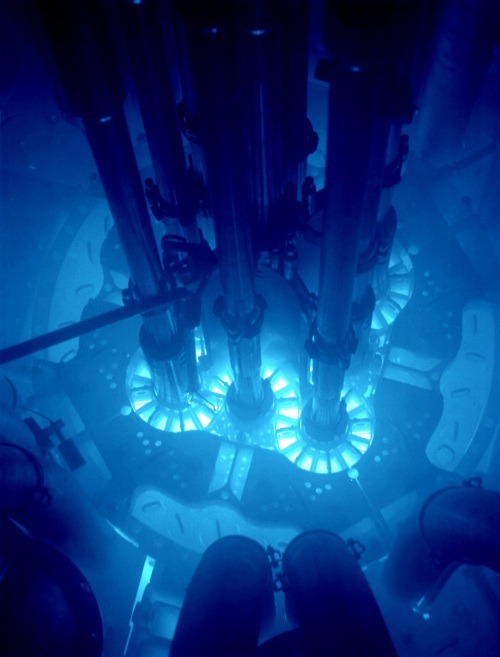
Cherenkov Radiation being emitted by the underwater core of the Advanced Test Reactor (ATR) at the Idaho National Laboratory.
The distinctive blue glow occurs when atomic particles become electrically charged and are accelerated beyond the speed of light, emitting photons in the process in a blue/violet spectrum.
Beyond the speed of light you say? Impossible right? In a vacuum, yes. But light travels much slower in water and it becomes possible for electrons and protons to actually move faster because water slows them down less.
Nice explanation of how it works
260 notes
·
View notes
Text
"Ukrainians who stayed on to work at the plant say they did so under duress. Employees report that Russian occupiers coerced them into adopting Russian citizenship and signing contracts with Rosatom. According to a recent IAEA report, the plant has announced that workers still officially employed by Energoatom, Ukraine’s state nuclear company, are barred from the site. The workforce “now consists of former Energoatom employees who have adopted Russian citizenship and signed employment contracts with the Russian operating entity, as well as staff who have been sent to the ZNPP from the Russian Federation.”
On top of that, current and former employees of the ZNPP, some of whom escaped past enemy lines, have said that Russia brutalized the plant’s dwindling workforce, resorting to torture to keep workers in line.They also report that Russia is violating international law by using the plant as a military staging ground, further increasing the risks to the facility. This claim has been supported by satellite evidence.
From the start of the war, Energoatom has objected to the occupation of the ZNPP, and raised alarms about the dangers the plant faces. Recently, the IAEA has also issued warnings about the degrading state of the ZNPP and the continued potential for a meltdown. In February, it issued a bulletin warning that the plant’s last backup external power line had been disrupted, creating a “precarious” situation. Today, the IAEA’s director general, Rafael Mariano Grossi, met with President Vladimir Putin and Alexei Likhachev, the head of Rosatom, in a closed-door session to discuss his concerns about the plant. But the agency has thus far been ineffectual in compelling Russia to cooperate, and its authority does not extend to claims of human-rights abuses away from the plant, even when they involve employees.
The result is a crisis unprecedented in the history of nuclear power. A disaster at the facility would be most immediately harmful to the people living near it. But the ZNPP is located in the watershed of the Dnipro River, which flows through southern Ukraine and into the Black Sea. If a meltdown occurs at the ZNPP and affects the waterways, experts indicate that all of southern Ukraine might be at risk for contamination.
...
In their stories of working at the ZNPP after the Russian occupation began, several sources describe incidents of detentions, interrogations, and torture. Kostiantyn Chebaievskyi worked at the ZNPP until August 2022, when he says he was arrested at the end of his shift and imprisoned by Russians. Chebaievskyi says that he was accused of communicating with Ukrainian authorities and that interrogators beat him and tried to force him to make a false confession. Other people employed at the ZNPP at the time say that cells intended to hold four to six people were used to detain up to 20 prisoners without any food, save what their relatives were able to bring on visits.
Chebaievskyi says that one form of torture involved what his captors called “a phone call to Lenin.” According to Chebaievskyi, the men would clip one cable to his earlobe and another to his finger, and then interrogate him while they turned the crank on a modified field telephone that would deliver a shock. “Everything goes dark,” he said. “All that you see is white lighting.” Chebaievskyi said that the interrogators repeated the procedure over and over, demanding to know his supposed contact in Ukraine. He also reported that some prisoners were forced to give interviews for Russian television crews, reciting prewritten scripts that were complimentary toward Russia. Chebaievskyi was released after 18 days, and then managed to escape from the city.
Other ZNPP employees corroborate allegations of abuse and torture. Volodymyr Zhaivoronok is a 50-year-old former equipment operator who says he was imprisoned for 53 days, many of them in the same cell where Chebaievskyi ended up. Zhaivoronok says Russian personnel beat the prisoners, targeting their backs, necks, and shoulders. “One is bringing you into the room, and another six people come there,” Zhaivoronok told me and my colleagues at the Reckoning Project. “They come in with batons, pistols.” He recalled that the torture room was covered in blood, and prisoners were forced to clean it. Zhaivoronok said that during one of the sessions, his torturers shot him in the side with a rubber bullet.
...
ZNPP employees claimed in 2022 that their plant also became a shield [like Chernobyl]. They reported that they heard what they believed to be Russian mortar shells launched from within or near ZNPP territory, and also saw Russian military equipment in crucial locations of the plant, including turbine halls near reactors. This equipment included armored personnel carriers and trucks, tanks, anti-aircraft systems, and rocket launchers. These sources also stated that Russian soldiers—possibly hundreds of them—have been deployed to the plant, and have complete access to spaces designated for evacuation and sheltering. These claims were supported in a September 2023 report, commissioned by Greenpeace, that used satellite imagery to identify signs of military activity in the vicinity of the plant. An accident involving military equipment and ordnance could damage the systems needed to cool the reactors, and could lead to a leak of radioactive material.
The operation of Zaporizhzhia, like that of all nuclear-power plants, is subject to international law, and to regular inspections by the IAEA, a treaty organization that reports to the United Nations. Since the beginning of the occupation, the IAEA and its director general, Grossi, have made several visits to Ukraine and to the ZNPP in particular, and have offered ongoing assistance to the plant’s administrators. In May, Grossi told the UN Security Council that the situation at the ZNPP “continues to be extremely fragile and dangerous,” and noted that the plant did not have enough staff to maintain safety measures, even with the reactors shut down. Grossi added that there had been seven occasions since the occupation began when the plant lost off-site power and had to rely on diesel generators, “the last line of defence against a nuclear accident.” (The plant has since suffered another external power loss.) In that address, Grossi asked that Russia abide by certain principles in its operation of the plant, including refraining from using it for military weapon storage."
- Nataliya Gumenyuk, "Looming Disaster at the Zaporizhzhia Nuclear Power Plant," The Atlantic. March 6, 2024.
#zaporizhzhia nuclear power plant#nuclear power plant#zaporizhzhia#international atomic energy agency#russia-ukraine war 2022#russian invasion of ukraine#prisoners of war#torture#military occupation#energoatom#rosatom
43 notes
·
View notes
Text
Scientists have overcome two key barriers to producing power from nuclear fusion, which could pave the way for producing near-limitless clean energy.
The scientists have ensured that the nuclear fusion reaction overcomes the two barriers to operating in a “sweet spot” for optimal power production: boosting the plasma density and containing the dense plasma.
A tokamak reactor is essentially used around the world for producing energy from fusion reactions. The reactors have a donut-shaped interior which is covered with magnets.
Continue Reading.
72 notes
·
View notes
Text
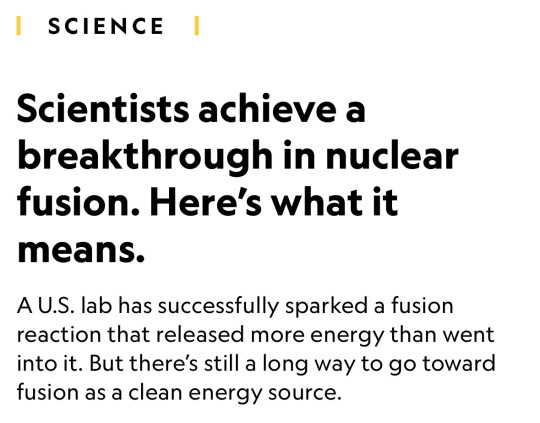


Source
517 notes
·
View notes
Text
About Nucear Permanent Disposal Sites

So, a couple of days ago someone commented under my one blog about nuclear energy what boiled down to: "But what about the waste? We need to take responsibility for the next thousands of years of humanity!" And yes, that is very much the favorite argument for the anti-nuclear lobby... and it is pretty much based on the science of the 1980s.
What a lot of people do not understand is:
How little nuclear waste we actually have.
How little of that waste is actually the highly radiating stuff.
How well we can contain this stuff.
That we actually have figured out a solution for permanent disposal.

First need about nuclear waste you have to understand that most of it is not that dangerous. Most of the waste we get out of the nuclear facilities is actually just stuff that was around the radiation and got slightly radiated. 90% of all nuclear waste is stuff like items that just happened to be within the nuclear facilities for a long while. Tools, wortk clothing and so on. This stuff radiates, yes, but it is technically not dangerous levels AND it will stop doing so within 100 years max. We literally do not need to worry about it. Those yellow barrels you will keep seeing in old media that somehow end up mutating people? Yeah, those are used for this kind of waste. And to be quite frank, we are super extra that we store this either way. Because we have waste from other types of facilities (like coal power, but also from places like airport) where this kinda waste also happens and we... just throw it away normally.
Then there is about 7% of nuclear waste that is a bit more radiated. This is mostly metal parts and such that were in direct contact with the nuclear elements. This gets more radiated and as such will radiate for a longer time. But, this, too, is radation that will be gone or down to safe levels within a few centuries.
Only 3% is waste, that is high-level radiating and even from this not all will radiate for millennia! In fact we have gotten real good with recycling this high-level waste and if we are now talking SciFi scenarios like Solarpunk, we could actually just switch to thorium based reactors, where almost all of it is recyclable.
But... Even with the high level radiating stuff that we cannot recycle and need to permanently store, we... actually long have a solution for it.

You have to realize that those fuel cells are actually pretty small. And that we have materials that can basically protect you from the radiation. So, we basically just take those small spend fuel cells, put them into glass, put that into several layers of metal, put all of that into a deep, deep hole the ground and then fill everything up with clay. And... done.
Chances are: Nobody is gonna find it. Because it is gonna be so deep underground. Even if they did: It is protected enough that nobody is gonna die of radiation poisoning directly. Not only that: But the best rock material to burry this stuff in, is already radiating. So... Like, duh. We already have super radiactive stuff in nature.
And even if someone got radiation poisoning... Unless you suppose that humans of the future are dumber than most animals... They will learn: "Dude died. Area bad. Do not dig there."
Scientifically speaking... The entire nuclear waste thing is such a fucking non-issue, that keeps getting pushed up mostly by fossil fuels (that, again, also produce radiating waste!) to keep folks from going for a full renewable + nuclear energy mix. Aka: The clean option.
The reason why so many politicians do not just agree to those disposal options is that a) they do not understand it themselves and b) nor do their constituents and there is sooooo much fearmongering about this going on.
Again, I am not saying that we should go full nuclear energy. But rather for an energy mix of renewables and nuclear. Be CO2 neutral. Because I can tell you one thing: If we do not do that, there are not gonna be humans in 3023 we have to worry about. Because they are all fucking dead, with the planet being inhospitable to life.

#nuclear#nuclear energy#nuclear power#science#science communication#fearmongering#science fiction#better future#going green
147 notes
·
View notes